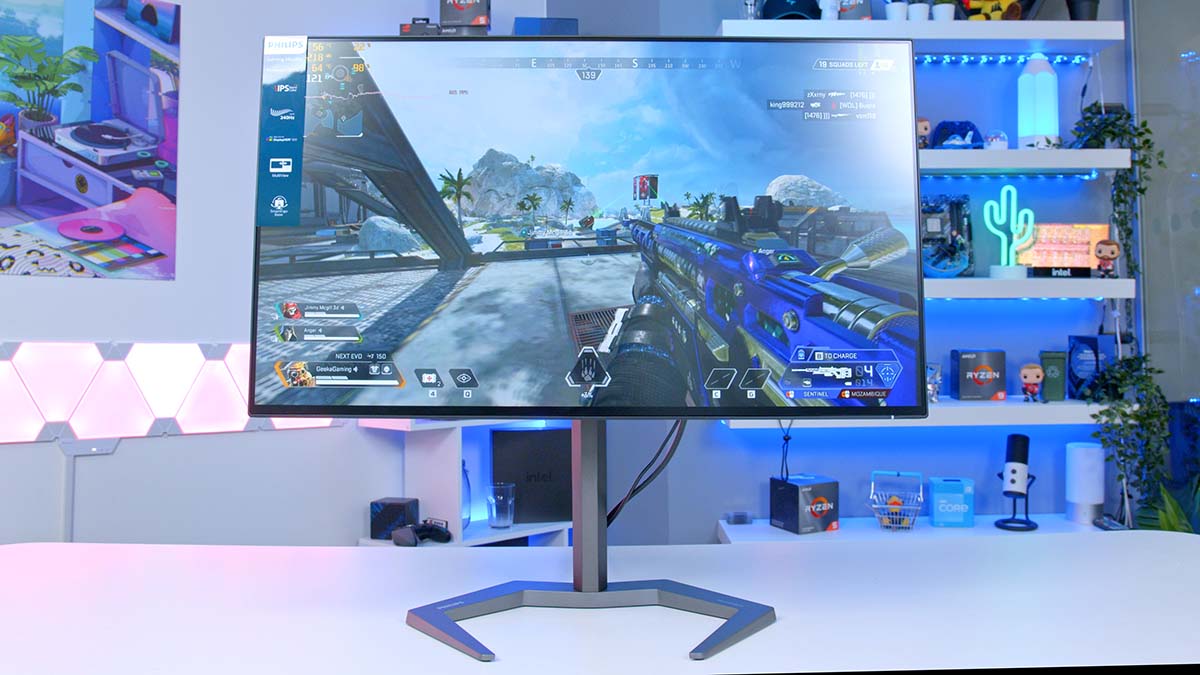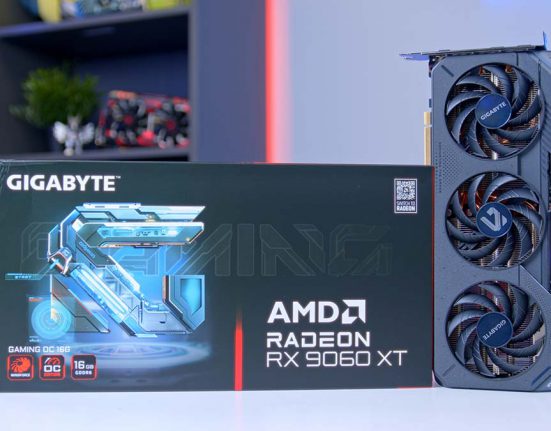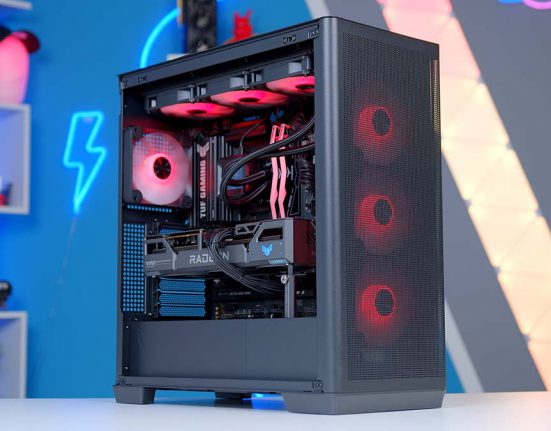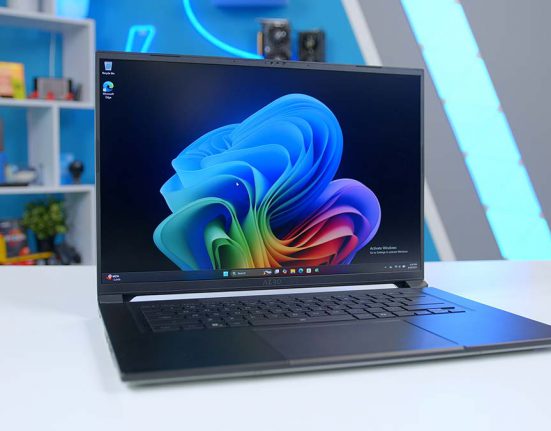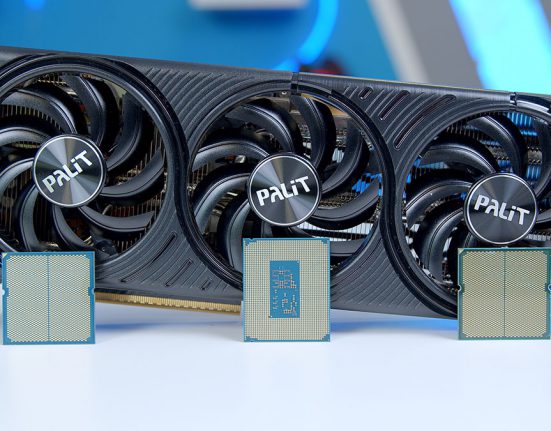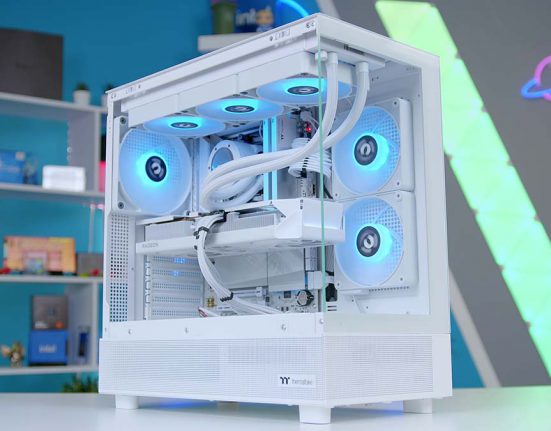Introduction
Now more than ever, 240Hz gaming monitors are becoming a popular choice amongst consumers as many competitive gamers look to gain an advantage in the latest titles. With the latest GPUs pushing the boundaries of 4K and 1440p gaming, consumers will want to take advantage of the additional framerates possible from these cards.
But for gamers looking to consistently hit 240Hz at 1440p, what display will provide the best viewing experience to suit their demands?
Suggested Article: Best 165Hz Gaming Monitors to Buy in 2023
One gaming monitor that looks to enable competitive gaming at 1440p is the Philips Momentum 27M15500P, a sophisticated 27-inch display that aims to combine the worlds of work and play into one neat package. But does this gaming monitor manage to balance these factors enough to act as a single monitor in a hybrid setup? Let’s find out!
Buy the Philips Momentum 27M15500P on:
Are 240Hz Monitors Good for Gaming?
On paper, boosting the framerates of a gaming setup can only be considered as a positive. Upgrading the refresh rate on your gaming monitor or picking up a more powerful graphics card results in smoother and more responsive gameplay.
However, the concerns surrounding higher refresh rates are more nuanced than what it shown in benchmarking graphs, as the benefits of the jump to 240Hz often depends on the individual needs.
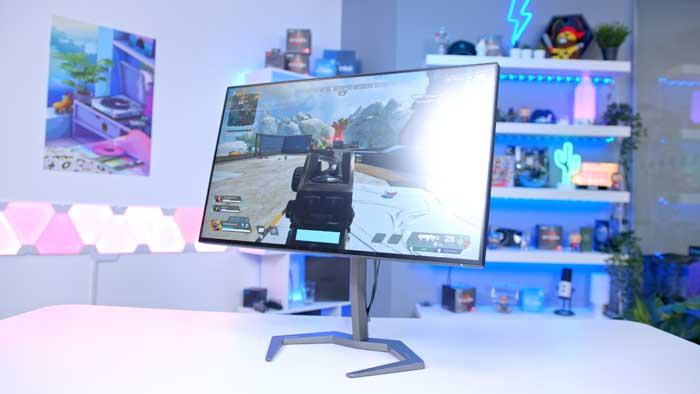
For example, a competitive gamer that currently plays on a monitor with a 60Hz or 120Hz will see a drastic change in gameplay, which is likely to take their performances in online multiplayer and Esports titles to the next level. On the other hand, a more casual gamer that already has a 144Hz or 165Hz monitor is less likely to notice a huge difference, making the investment to 240Hz rather unnecessary.
Another sticking point is the pricing, as it’s fairly common for a 240Hz display to be attached with a hefty price tag. The Philips Momentum 27M15500P is just one example of this, asking consumers to shell out a similar amount needed for the more visually appealing 144Hz or 165Hz 4K gaming monitors. Therefore, anyone picking up a 240Hz should be putting a high priority on gaming performance, and be prepared to spend more money in order to achieve it.
If you’re a fan of single-player games and interested in improving the visual fidelity of your display rather than the performance, then a 4K gaming monitor will be a better upgrade for your needs. Alternatively, gamers that want high-end performance without the additional costs could opt for a 240Hz with a 1080p resolution instead, if they are willing to reduce the visual quality.
Philips Momentum 27M15500P Design & Aesthetics
Now that we’ve addressed what type of gamers should be thinking of grabbing a 240Hz gaming monitor, it’s time to take a closer look at the Philips Momentum 27M15500P. Starting off with the appearance, and at first glance, this monitor looks like it would be more at home in an office as part of a workstation than a gaming setup!
Instead of opting for the typical bulkier, futuristic designs found on most gaming-oriented displays, this monitor includes a metallic grey base and less-intrusive form factor, culminating in a sleek and sophisticated look. On face value alone, the only aspect which would indicate this is a gaming monitor is the m-shaped stand. Whilst it is less conventional, I’m quite the fan of this approach from Philips, as it separates their designs from the crowd whilst reflecting the purpose of this monitor.
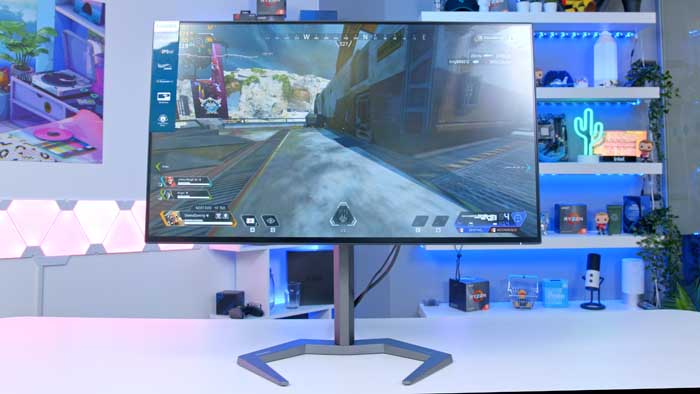
Before even diving into the technical details, it seems as if this display is meant to target consumers putting together a productivity and gaming hybrid setup. The more subtle and sophisticated tones of the Momentum 5000 series makes them an ideal choice for discrete gaming sessions in an environment where you need to act more professional.
In terms of the practical implications, the slender frame is fairly easy to move around, despite being quite heavy compared to gaming monitors with a plastic stand. To make the positioning of this monitor even simpler, the SmartErgoBase stand allows users to tilt, swivel, and rotate the stand to various degrees, with the 130mm height adjustments also available letting users position the display to fit seamlessly within their gaming setup.
So far, the Philips Momentum 27M15500P has made a strong first impression, so let’s hope the momentum carries on through when it is up and running.
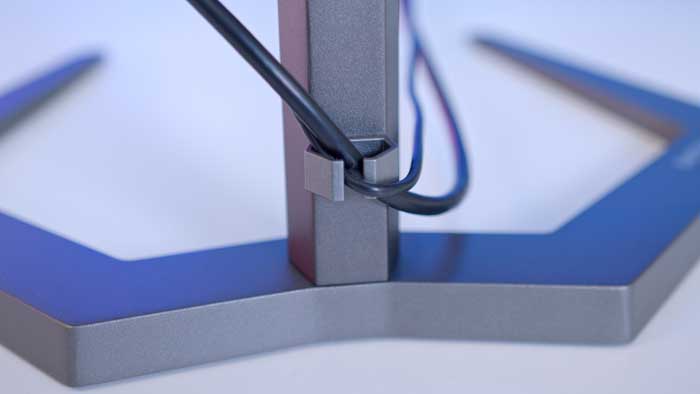
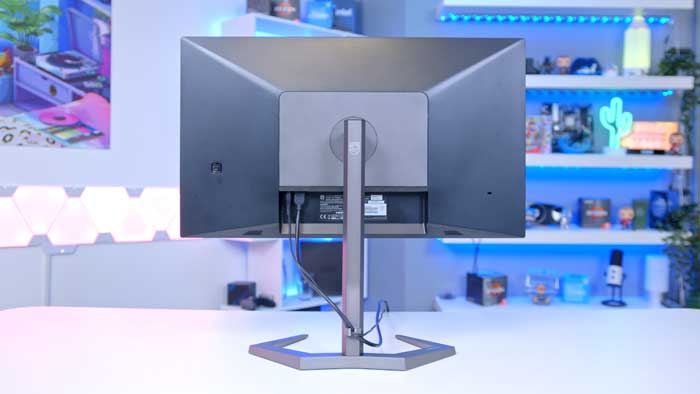
Philips Momentum 27M15500P Specs & Performance
Arguably the most important aspect of any gaming monitor is the performance. Lots of gamers will tweak with the initial design by swapping out the stands for monitor arms, and will often find better ways around features included on a display such as sound or IO connectivity. But with the performance specs, there are no loopholes or alternatives, as the specs of a monitor will limit the output of any gaming PC connected to it.
| Key Specs | Philips Momentum 27M15500P |
|---|---|
| Screen Size | 27″ |
| Max Resolution | 2560×1440 |
| Refresh Rate | 240Hz |
| Response Time | 1ms |
| Colour Gamut | 98% DCI-P3, 131.9% sRGB |
| Panel Type | Nano IPS |
| Display Inputs | 2 x HDMI 2.0, 2 x DisplayPort 1.4 |
| Adaptive Sync | AMD FreeSync Premium Pro |
Looking at the Momentum 27M15500P specifically, it clearly abides to the modern standards of gaming monitors, meaning there aren’t any nasty surprises to be aware of. The 1ms response time and 1440p resolution is considered the norm for a 27inch gaming monitor nowadays, with the 98% DCI-P3 colour accuracy providing a vibrant image that will satisfy most gamers.
As discussed earlier, the main performance-based selling point is the 240Hz refresh rate. Whilst the jump from 165Hz to 240Hz is less impactful than the transition from 60Hz to 144Hz, gaming enthusiasts with an eye for details will be able to spit the subtle enhancements provided. It may appear subtle to many, but in the midst of battle, every millisecond counts.
Overall, the performance on the Momentum 27M15500P will be more than enough to appease the demands of even the most competitive gamers. On top of the top-tier performance, the 1440p display will offer a sharp and vibrant image, allowing gamers to see a myriad of details on a map or within the environment.
Philips Momentum 27M15500P Features
Apart from the 240Hz refresh rate, it may seem as if the Philips Momentum 27M15500P has fairly little to offer compared to other gaming monitors on the market. However, there are a number of features hidden within this design that will help to enhance the viewing experience when playing the latest titles. Here a few of the key features that caught our attention.
27inch Nano IPS Display
There are plenty of debates over the perfect size for a gaming monitor, with 27 and 32 inch displays often leading the charge. However, this 27 inch gaming monitor crams plenty of detail into its compact real-estate, mainly thanks to its nano IPS panel. IPS panels are known for their great colour accuracy and wide viewing angles, which means this display will have no issues being the star of the show, or acting as a secondary within a multi-monitor setup.
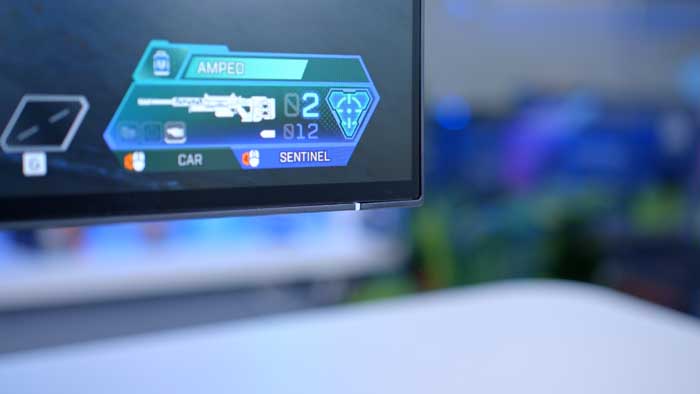
AMD FreeSync Premium Pro
Adaptive sync is a great tool for a gaming monitor to include, as it helps to reduce the impact of motion blur and screen-tearing to provide a consistently sharp image. Whilst the menu on the display fails to specify which technology it supports, this monitor is compatible with AMD FreeSync Premium Pro. This technology combines low latency gameplay with HDR visuals for a smooth gaming experience.
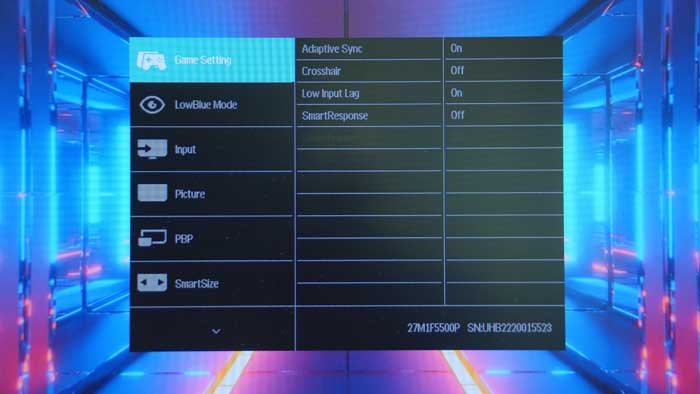
Rear IO
In terms of connectivity, this monitor includes an extensive amount of ports on the rear IO. Along with several USB ports for gaming peripherals and other desk accessories, the 27M15500P includes two HDMI 2.0 ports and two DisplayPorts, allowing consumers to connect multiple devices at once. Unfortunately, the lack of HDMI 2.1 means that performance of next-gen consoles will be somewhat limited on this display, but they should still run at 120Hz in 1440p.

MultiView Display
On the topic of connecting multiple devices at once, the Philips MultiView display software allows this monitor to display signals from multiple devices at the same time. Not only is this beneficial for multitasking during productivity tasks, but it has plenty of applications for streamers and content creators who may only have the money or space for a single monitor.
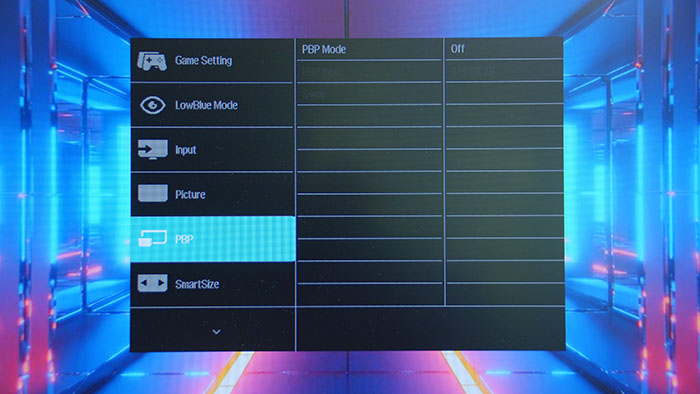
OSD Navigation
Unfortunately, Philips don’t provide any external software for this gaming monitor. However, the on-screen display provided is detailed enough to include plenty of ways to personalise the settings to suit your needs. On top of the basic settings such as brightness and contrast, the OSD can be used to enable different modes such as adaptive sync and blue-light, switch between pre-set viewing modes, and change the input source.
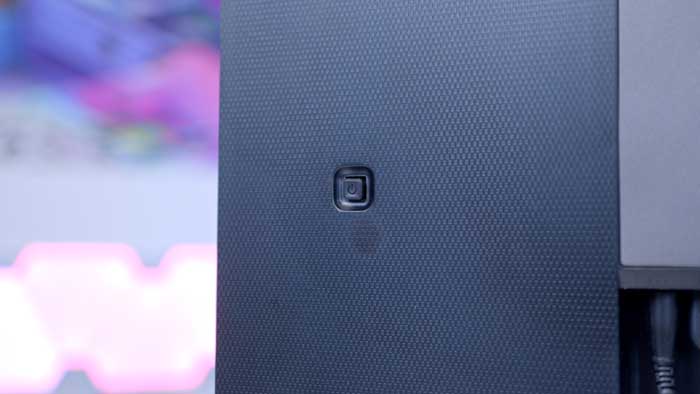
Alternatives
If the Momentum 27M15500P seems like the type of display that could be a strong fit within your gaming setup, but are not yet convinced on all the features provided, allow us to provide some alternatives that share some similar aspects. After browsing through these recommendations, you’ll hopefully be able to figure out which monitor will be able to meet your demands.
Gigabyte AORUS FI27Q-X
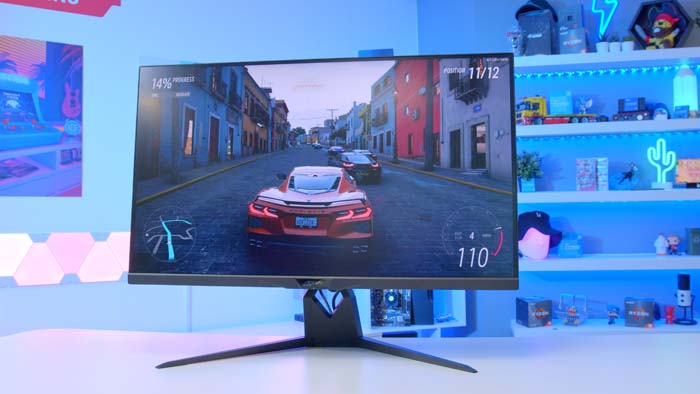
For those intrigued by a 240Hz display for competitive gaming, the Gigabyte AORUS FI27Q-X is another 1440p monitor to consider. In terms of performance, this monitor will offer a very similar experience to the Momentum 27M15500P.
However, Gigabyte’s offering takes more of a gaming-based approach to its design, making it a better fit for a strictly gaming setup.
Want to know more? Check out our Gigabyte AORUS FI27Q-X.
Buy the Gigabyte AORUS FI27Q-X on:
Philips Momentum 32M1N5500VS
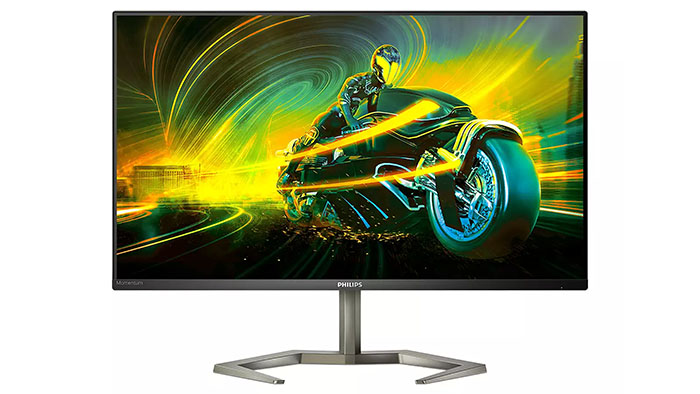
Our next recommendation is another product from the Philips Momentum range, the 32M1N5500VS, which means it possesses an almost identical design to its counterpart. This 32inch display is a great choice for anyone that is a fan of the more work-friendly aesthetic on these monitors, but are willing to sacrifice the 240Hz refresh rate in order to cut down on costs. However, 165Hz refresh rate should be enough for most mid-range systems.
Buy the Philips Momentum 32M1N5500VS on:
Cooler Master Tempest G27U
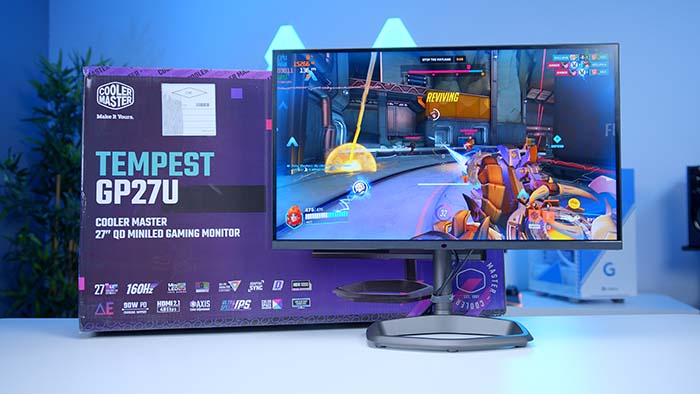
If you are the type of gamer that is more concerned with the quality of visuals rather than refresh rates, then the 4K resolution on the Cooler Master Tempest G27U is a solid alternative for a workstation and gaming hybrid. The upgraded visuals will provide a sharper and more detailed image, which is ideal for single-player games and RPG’s, whilst keeping a respectably smooth 160Hz refresh rate.
Read our in-depth review of the Cooler Master Tempest G27U.
Buy the Cooler Master Tempest G27U on:
Philips Momentum 27M15500P Gaming Monitor Review
-
Features
-
Design
-
Versatility
-
Value for Money
Summary
Overall, the presence of 240Hz gaming monitors like the Philips Momentum 27M15500P is slowly becoming a tantalising prospect. With more PC hardware being able to achieve framerates above or around this target, competitive gamers will undoubtedly benefit from the additional performance. In addition, the IPS panel is very vibrant, leading to an impressive splash of colour for a 1440p resolution display that provides enough visual quality to scan environments in great detail. To match the top-tier performance, this monitor possesses a sophisticated design that wouldn’t look out of place in a workplace environment, making it a perfect option for high-end gamers looking to blend their work and gaming spaces into one setup.
Whilst the features and overall design of this monitor will have lots of appeal for Esports enthusiasts and competitive gamers that are willing to pay for a more luxurious gaming experience, the vast majority of gamers will struggle to justify the need for this monitor within their setup, especially when you consider the lofty price tag. For budget and mid-range systems, a 165Hz or 144Hz will be a more suitable fit for 1440p, as only high-end builds won’t be able to hit the higher frames in most titles. On top of this, the Momentum 27M15500P is fairly straightforward in terms of both design and features, which means it lacks the selling points needed to make it stand out amongst the competition.
Pros
✅ Sophisticated appearance
✅ 240Hz refresh rate
✅ Great for workstation hybrids
Cons
❌ Pricey 1440p display
❌ Requires expensive hardware to reach 240Hz
❌ Lack of software support


